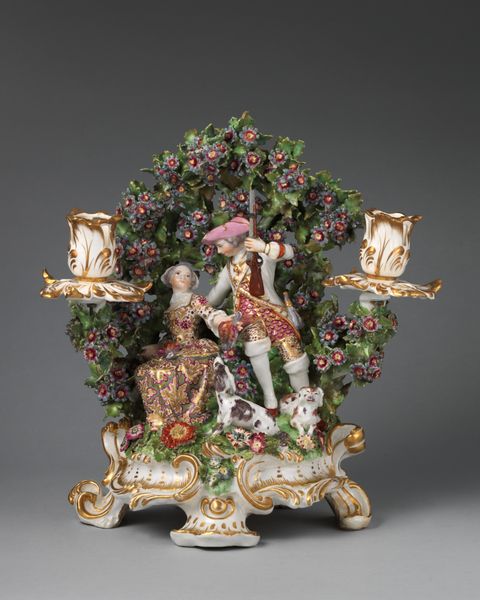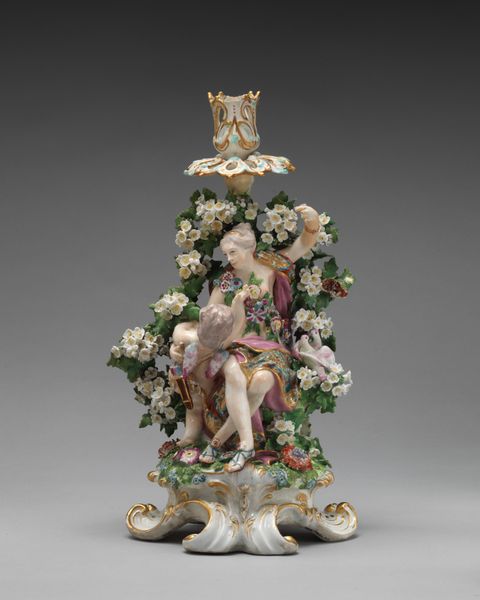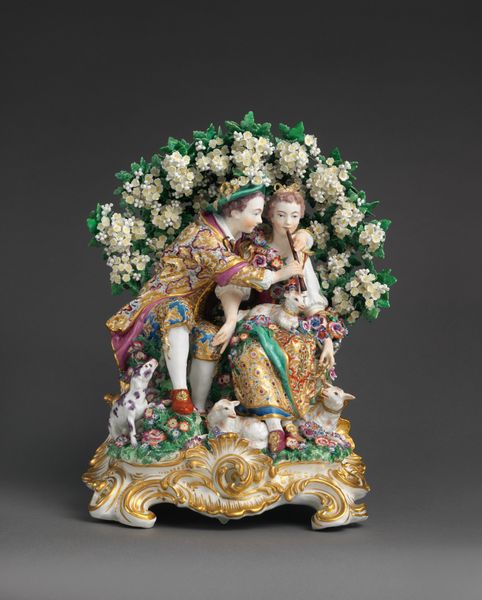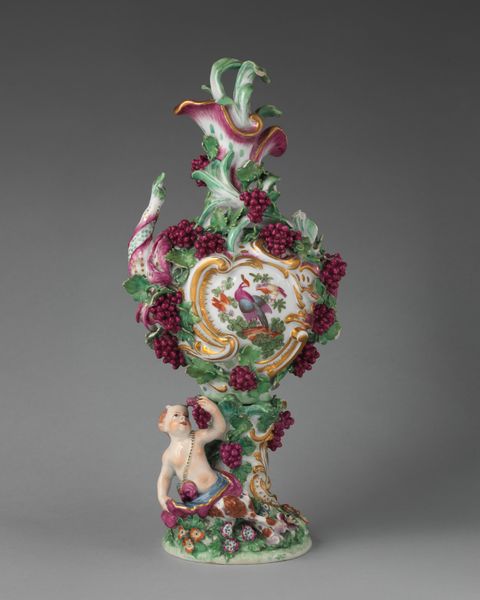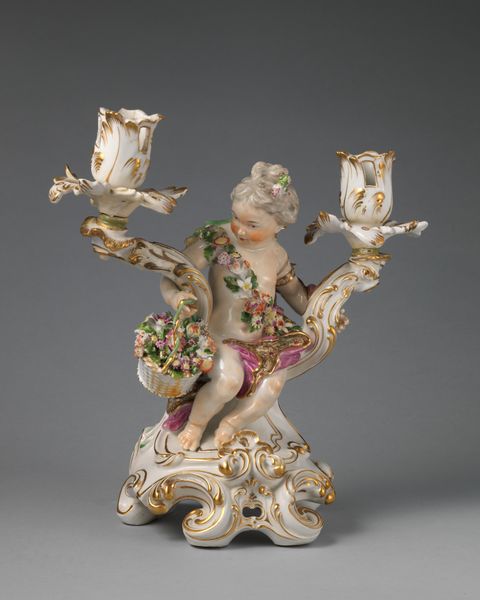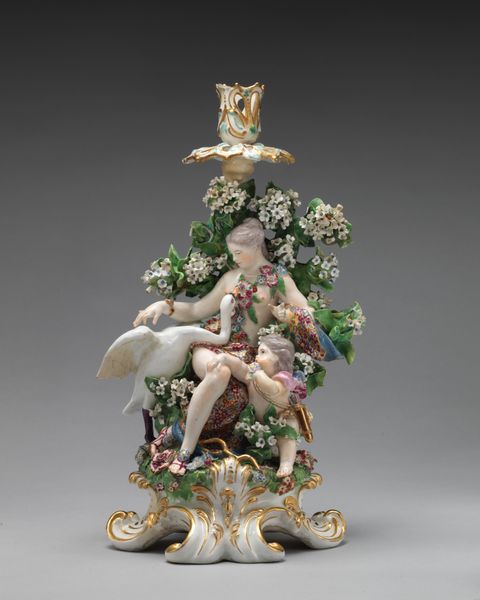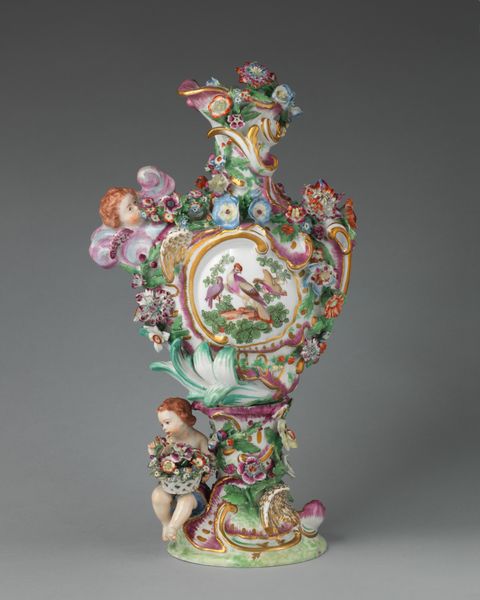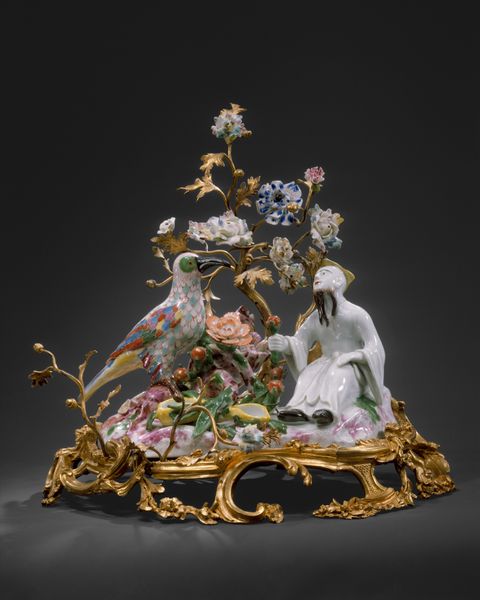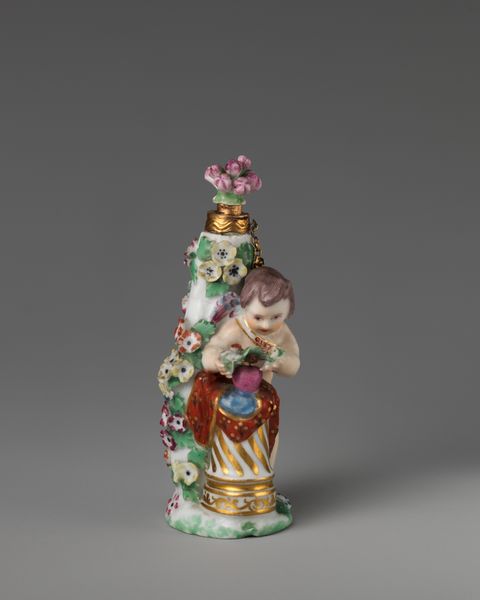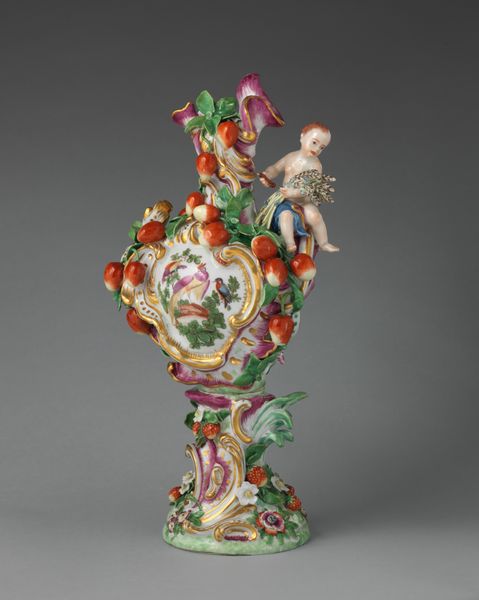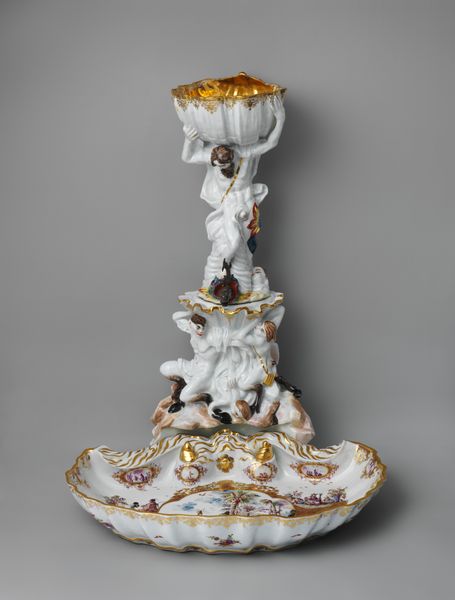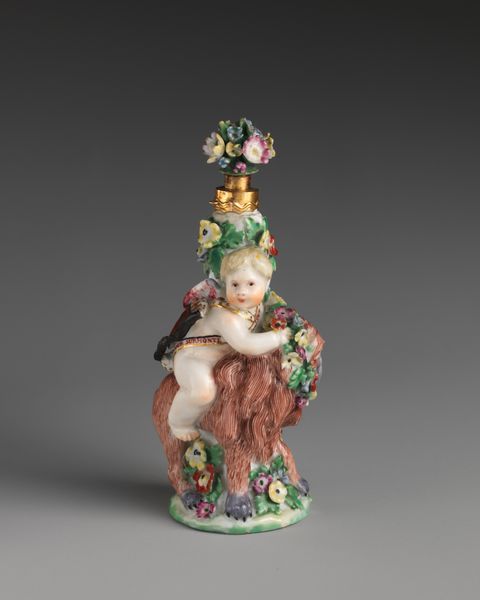
Candelabrum (one of a pair) 1760 - 1770
0:00
0:00
ceramic, porcelain, sculpture
#
portrait
#
dog
#
ceramic
#
flower
#
porcelain
#
figuration
#
sculpture
#
genre-painting
#
decorative-art
#
rococo
Dimensions: Overall: 10 7/8 × 11 1/4 in. (27.6 × 28.6 cm)
Copyright: Public Domain
Curator: What strikes me is the pure, unapologetic prettiness of it all! It’s like stepping into a porcelain dream. Editor: Indeed! We’re looking at a Candelabrum, one of a pair actually, crafted between 1760 and 1770 by the Chelsea Porcelain Manufactory. You can find it here at the Met. It's an exquisite example of Rococo decorative art, porcelain through and through. Curator: Rococo gone wild! All those flowers bursting forth, the little dog gazing up so adoringly, and the two figures so beautifully entwined—it's as if happiness itself were sculpted. Do you get the feeling they are about to go dance under a summer moonlight? Editor: The figures do exude a pastoral charm typical of genre scenes that were very popular at the time, evoking aristocratic fantasies of simple, rural life, a carefully constructed image that papered over deep social inequalities. What are your thoughts on this "lifestyle advertising" from the pre-revolutionary era? Curator: The figures remind me a bit of porcelain dolls longing for fresh air. I also can’t help thinking about how these objects would have been conversation pieces displayed in a dimly lit salon, where flickering candlelight made them almost come alive. So in this case, they're not actually advertising, it’s pure joy! Editor: True, such extravagant porcelain works, like this candelabrum, became powerful signifiers of wealth and refined taste for those who collected them. The craze to be among the elite made the market a place of heavy artistic, socio-economic pressure, of sorts. Curator: I suppose seeing them like this brings everything a bit full circle, but I still appreciate their playful grace. They capture the essence of an era obsessed with beauty, a beauty so potent it nearly bursts. Editor: I agree, they serve as poignant artifacts. Holding so many historical nuances and revealing to us so many ways of perceiving society and artistry of the late 18th century.
Comments
No comments
Be the first to comment and join the conversation on the ultimate creative platform.
